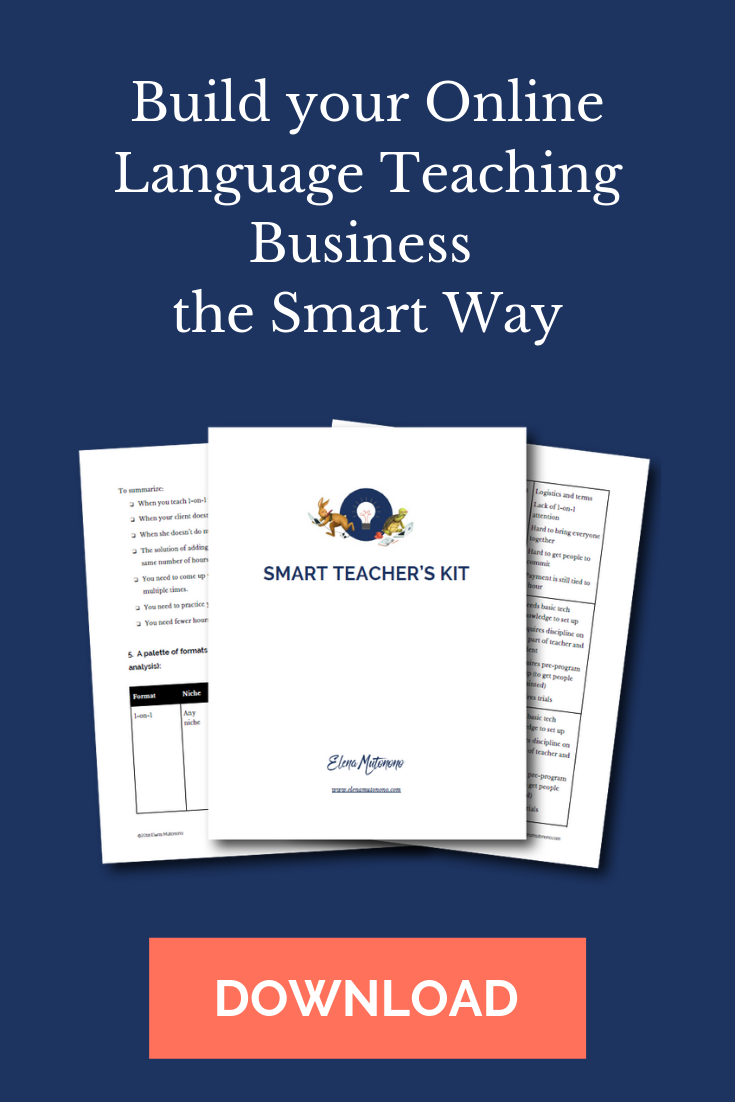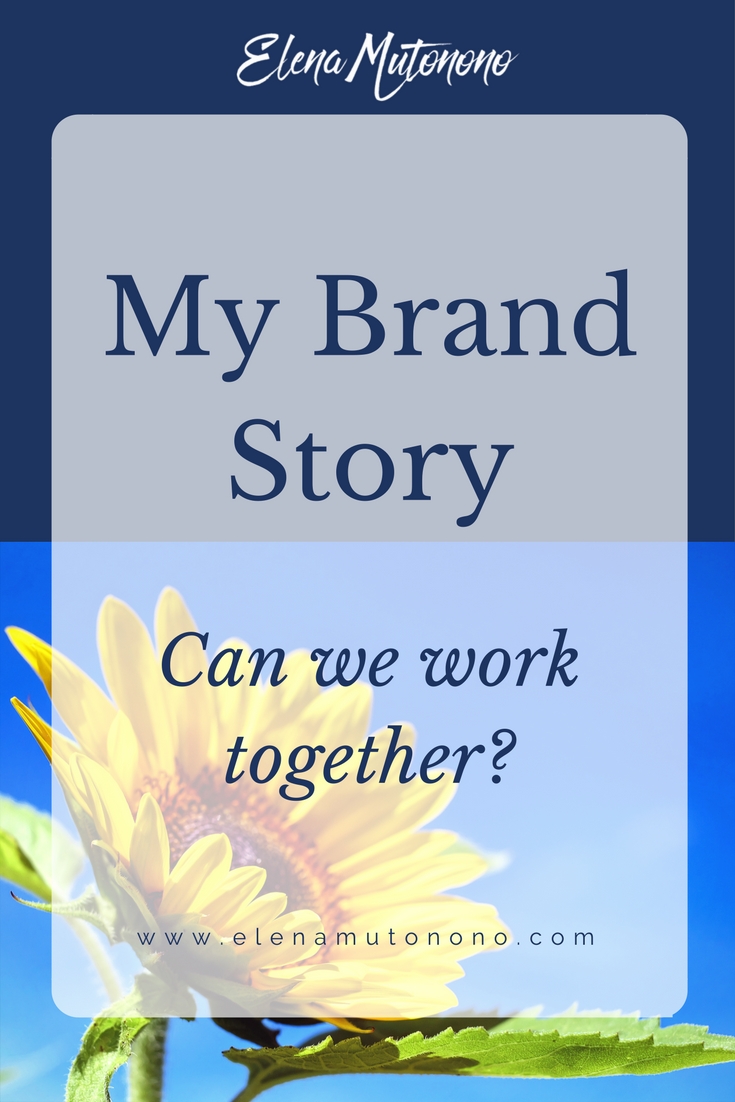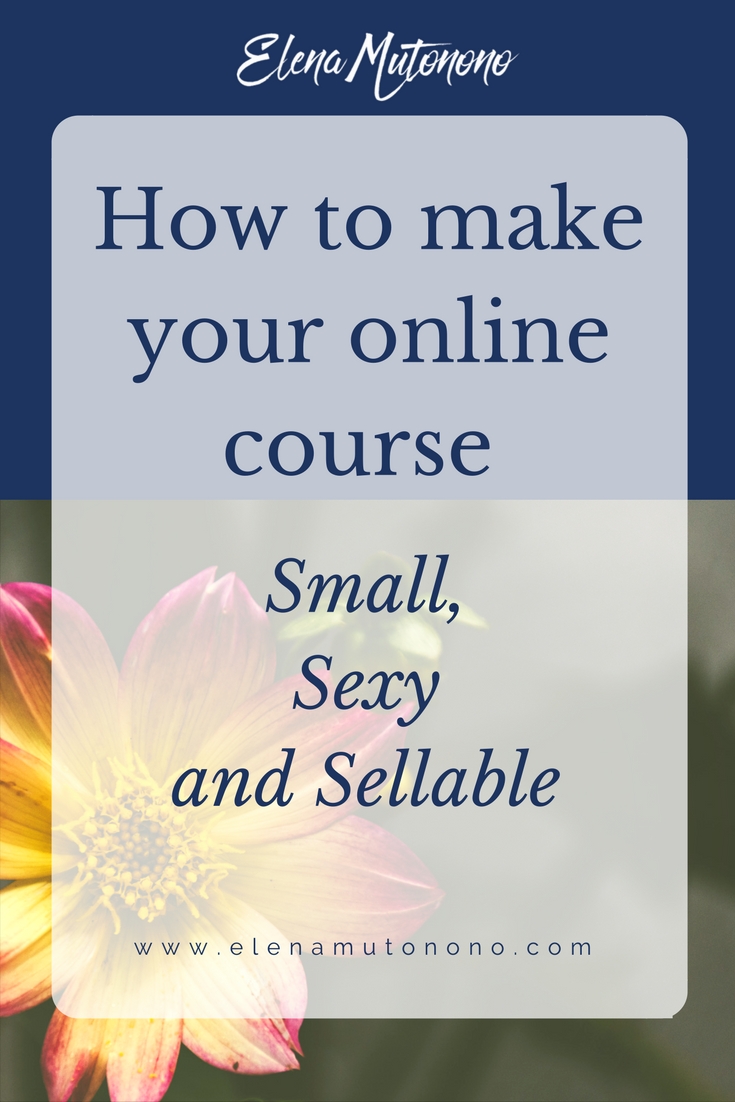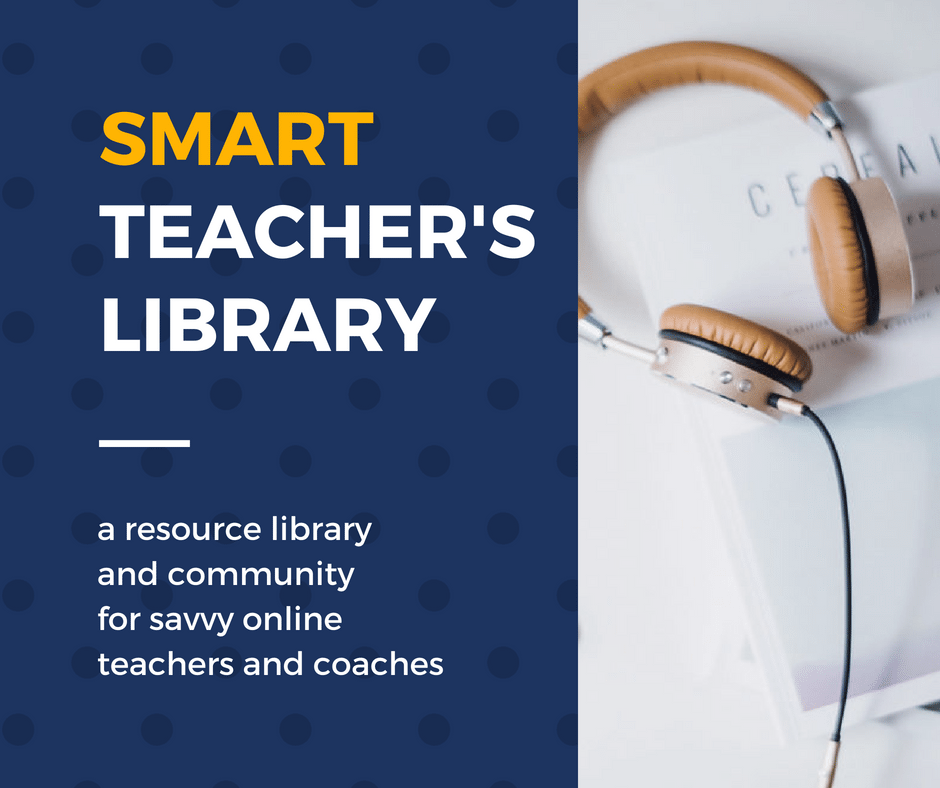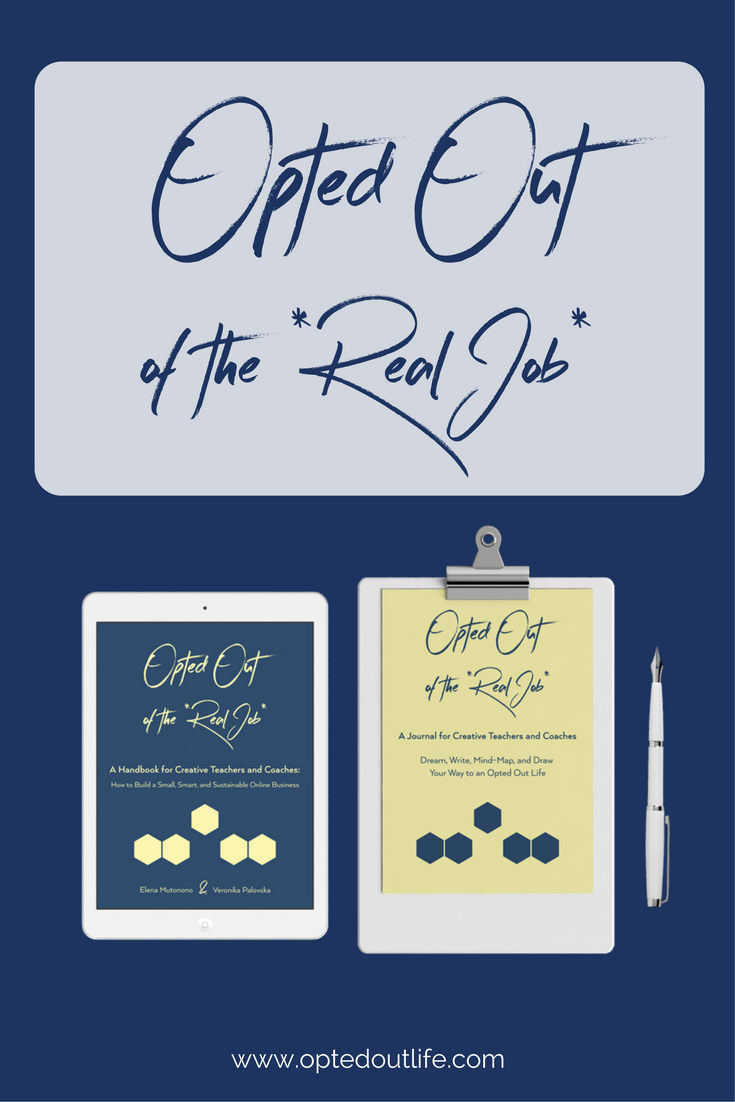“What in the world do I include in my newsletter?”
“I can’t do another newsletter. I spend so much time creating stuff for social media, then for my blog…I have no strength left to invent the newsletter content.”
“Why should I write another newsletter? People get so much junk in their inboxes. Why should I contribute to it?”
“Isn’t email dead?”
Sound familiar? You’re not alone. A lot of online teachers and coaches like you have a hard time figuring out how to use their newsletter effectively so it adds value to your reader, not robs her of her time.
This post will help you simplify email communication with your potential clients, which means that by the time you read it you will:
- Be convinced the email isn’t dead and stop feeling guilty about emailing
- Know the place of email in your entire online business strategy
- Learn what to write in your emails.
Are you overwhelmed when it comes to writing the #newsletter to your subscribers? You might find this helpful! #smallbiztips #emailmarketingClick To Tweet
Do you think that email is dead or feel guilty about emailing?
By now I am convinced that the only people who tell me that email is dead are the ones that don’t send any emails on a regular basis. And if they don’t, I’m not sure I can trust their judgement.
Whenever you are tempted to say that email is dead, try sending your newsletter weekly for about a year and see how it works.
If you love numbers, here are some statistics for you.
The next stronghold to overcome is the feeling of guilt for “cluttering” someone else’s inbox.
This is another ridiculous statement because if you ask someone to sign up for your updates and they do that of their own accord (hopefully you don’t apply any pressure), the honest thing you should do is to deliver the updates and not complain that people will die because you visit their inbox once a week.
Email marketing isn’t about you, it’s about your readers — the people that want to hear from you and have therefore given you their gracious permission to send them your updates. When their inbox gets cluttered, they may unsubscribe, and that’s fine.
But until they do, you have to keep your promise. Otherwise, why ask?
Find the role of email in your online business strategy.
The next big deal is the role of a newsletter. After all, there’s the social media, and then there’s the blog (or other channel where you share your content). Do you create a completely separate piece of content? Do you repeat yourself? Do you send “sales emails” only?
Last year during a live panel discussion in the Online Teacher’s Summit, someone asked me why they couldn’t get any clients through social media.
The question revealed the same problem — people think that each online channel we use to connect with our audience is “created equal” and is used for the same purpose, which isn’t true.
Let’s see how each of the following pieces fit into the online teaching business puzzle:
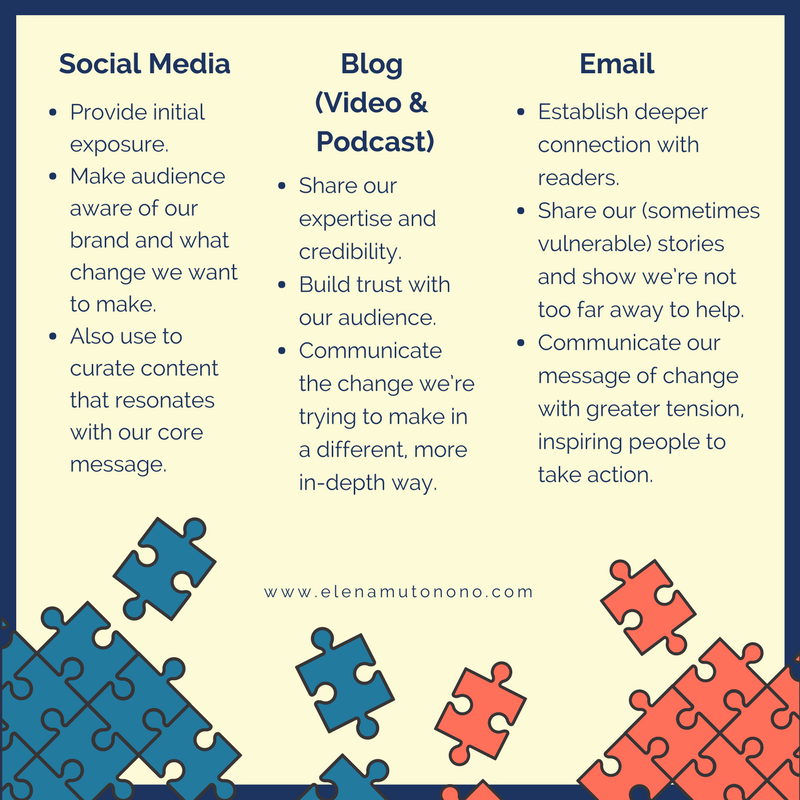
So email brings everything together. I must say that since this first and awkward email I sent to my 37 subscribers in May of 2015, I have generated and grown my revenue thanks to email.*
When a person gets on your website, most likely she isn’t ready to buy yet. So she either leaves or signs up for your updates (or a free offer). If she does, chances are she will buy at some point, and if you deliver great services, she’ll buy again.
*Fun fact: out of the 37 subscribers who received the first email I linked above, 23 opened it, and 7 have been my customers since that time. I’ve made over $3,000 from the 7 of them over the last 3 years (not to mention the friends they brought to my blog, etc.)!
***
Ready to learn how you can use your social media and email to build a community? Check out my book!
What do you write in your email?
In this section I’ll speak of the puzzling and painful topic of what to write in a newsletter. And in the resource area below, I’ll share a link to a post with my 3 emails that made the most impact on my audience, not just from a financial standpoint.
1. Connect it to your content (blog, podcast, etc.) but go deeper.
If you’re a movie buff, you probably enjoy all of the behind-the-scenes stories about a movie. When you get a DVD, you will watch not just the movie, but the actors’ comments about the movie, the scenes that were never included, and the juicy trivia.
In your online teaching business, your blog (or your YouTube channel, or your blog post) is your “movie,” while your newsletter is the juicy behind-the-scenes.
You may wonder why anyone would listen to the “comments,” but if you are a fan you will. And the point of building our brands online and looking for our ideal clients is so we turn passive consumers into fans, and then we won’t need to worry about “salesy” marketing anymore!
2. Communicate the change you want to see in the world (+ add more tension).
The change I want for my readers is the liberating feeling of having more time to produce higher quality work that is fresh, creative and empowering while generating the same revenue or more.
In order to do that, I teach people (on this blog, among other things) how they can get out of the bind of working “too many hours” and get back to doing their art.
In my emails I emphasize why working smarter is important and create more tension to move people to act, not just observe or “get knowledge” (as they would from a blog or even an online course).
3. Be a friend.
When you’re a friend, your writing breathes a different message, and people are eager to read it. When you’re a friend, you share your fears, burdens and life lessons as much as you would over a cup of coffee with someone you love.
When you’re a friend, the tone of your voice changes from “preachy” to encouraging and empathizing, making your offer to help not salesy, but caring.
In conclusion…
“I don’t want to write newsletters because I don’t want to sound like XYZ.”
You don’t have to sound like someone else, you need to find your voice to sound like yourself. Write your newsletter in a way that your reader will want to drop everything, brew a cup of coffee/tea, and indulge.
What to do now:
- If you struggle to find your own voice and write like a “human” on the web, I recommend Veronika Palovska’s conversational writing cheat sheet.
- If your inbox is full of emails and you don’t know what to do with them, here’re 5 practical tips.
- Here is a detailed post on how to write an email that inspires change that includes my 3 most popular email campaigns.
The post was updated in April, 2021.

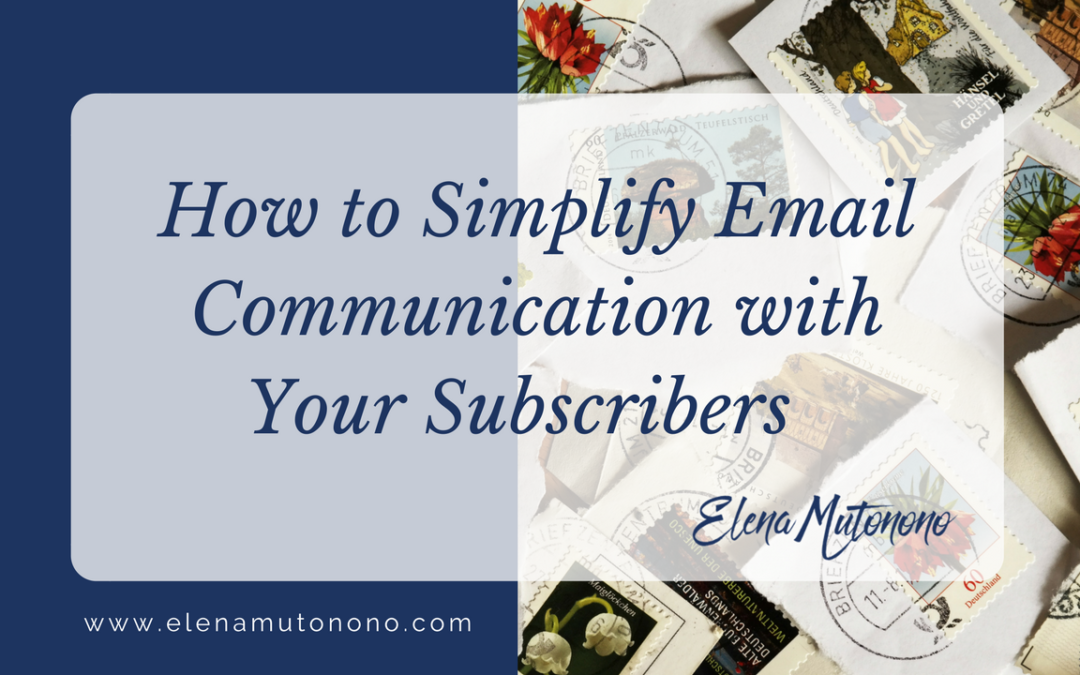
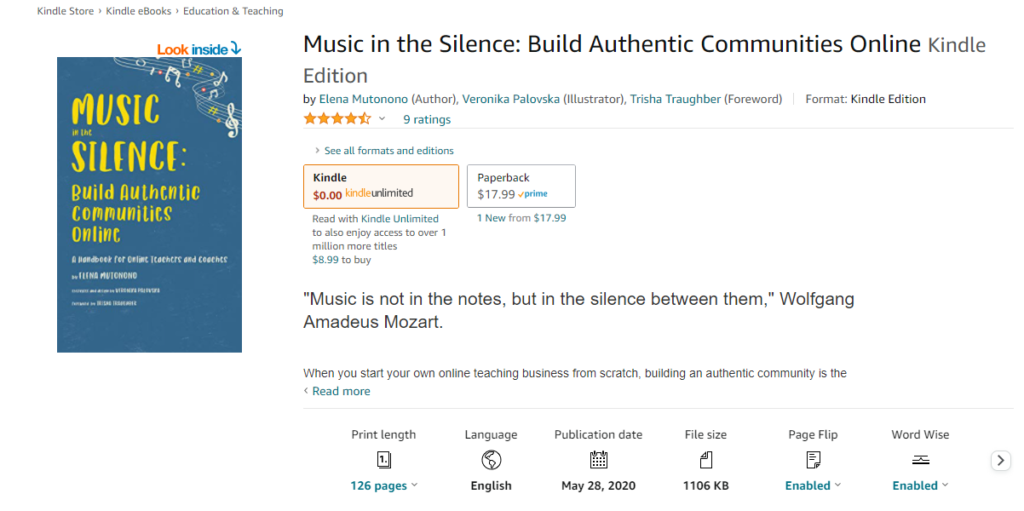
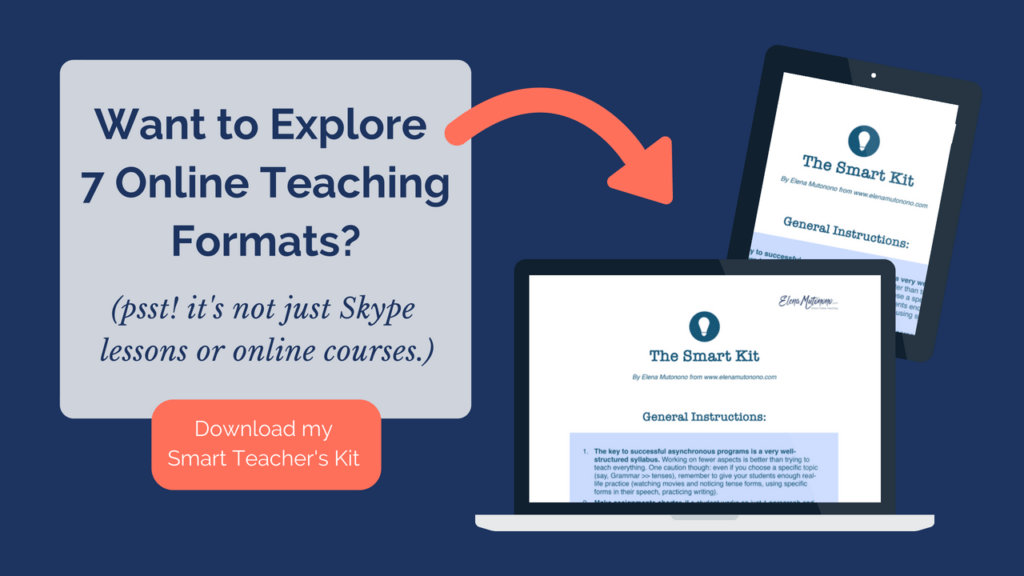
 Welcome to my nook where *Big Magic* happens. My name is Elena Mutonono, I help small business owners package their services as digital products and sell them online. I want you to work smarter, not harder. Increase your impact beyond your current face-to-face clients. Grow your business as you reach more people all over the world.
Welcome to my nook where *Big Magic* happens. My name is Elena Mutonono, I help small business owners package their services as digital products and sell them online. I want you to work smarter, not harder. Increase your impact beyond your current face-to-face clients. Grow your business as you reach more people all over the world.
